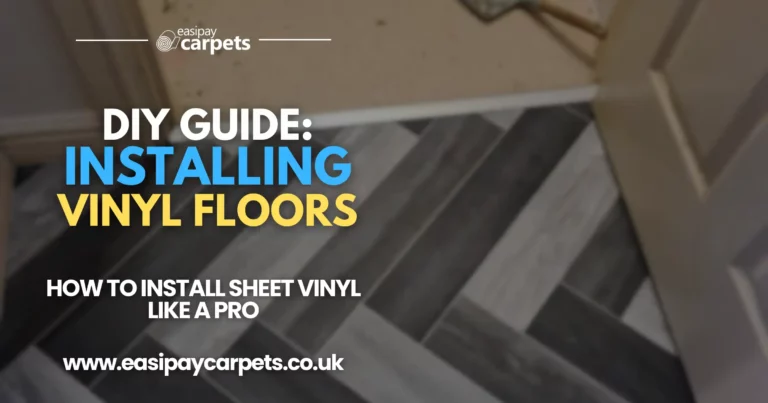

DIY Guide: Installing Vinyl Flooring
Vinyl flooring is a versatile, durable, and stylish option for any home, making it a popular choice for both DIY enthusiasts and professional installers. However, achieving a flawless vinyl flooring installation requires careful planning, the right tools, and a few insider tips. Whether you’re installing vinyl planks, tiles, or sheets, getting the details right can make all the difference in the final look and longevity of your floors. In this guide, we’ll share professional tips for a perfect vinyl flooring installation, covering preparation, best practices, and common mistakes to avoid.
Preparation: The Key to Success
A successful vinyl flooring installation starts with thorough preparation. Taking the time to properly prepare the space will help ensure a smooth and durable finish. Here are some essential preparation steps:
1. Measure Accurately and Plan Your Layout
- Tip: Measure the room accurately to determine the amount of vinyl flooring you’ll need. Allow for a 10% overage to account for cutting and waste.
- Why It Works: Accurate measurements help you purchase the right amount of flooring and plan the layout to minimize seams and waste.
- Pro Tip: Sketch a layout plan before starting, considering the direction of the planks or tiles and any patterns that need alignment.
2. Acclimate Your Vinyl Flooring
- Tip: Acclimate your vinyl flooring to the room’s temperature and humidity by laying the unopened boxes flat in the installation area for at least 48 hours before installation.
- Why It Works: Vinyl expands and contracts with temperature changes. Acclimating the flooring helps prevent issues like buckling or gaps after installation.
- Pro Tip: Maintain a room temperature of 18-30°C (65-85°F) during acclimation and installation for the best results.
3. Prepare the Subfloor
- Tip: Ensure the subfloor is clean, dry, and level before installing vinyl flooring. Remove any old flooring, debris, and nails, and repair any imperfections like cracks or dips.
- Why It Works: A smooth, even subfloor provides a stable base for vinyl flooring, preventing bumps and ensuring a long-lasting installation.
- Pro Tip: Use a self-levelling compound for concrete subfloors or sand down high spots on wooden subfloors to achieve a level surface.
4. Use the Right Underlayment (if needed)
- Tip: Depending on the type of vinyl flooring and subfloor, you may need an underlayment for added cushioning, moisture protection, or sound reduction.
- Why It Works: The right underlayment can improve the feel and performance of vinyl flooring, providing a softer underfoot experience and reducing noise.
- Pro Tip: Check the manufacturer’s recommendations for underlayment requirements specific to your vinyl flooring type.
Installation Best Practices
Once your space is prepared, follow these best practices to ensure a perfect vinyl flooring installation:
1. Start with a Solid First Row
- Tip: Begin installing vinyl planks or tiles along the longest wall or the most visible area of the room. Ensure the first row is straight and secure, as it sets the foundation for the entire installation.
- Why It Works: A perfectly aligned first row helps maintain even spacing and alignment throughout the installation, preventing gaps and uneven edges.
- Pro Tip: Use spacers to maintain an expansion gap of about 1/4 inch between the flooring and the wall, allowing for natural movement.
2. Stagger Plank Joints for a Natural Look
- Tip: Stagger the joints of vinyl planks by at least 6 inches to create a more natural, random appearance and add strength to the installation.
- Why It Works: Staggered joints avoid weak spots and repetitive patterns, enhancing the overall aesthetic and durability of the floor.
- Pro Tip: Cut the starting plank of each new row to a different length to ensure the joints are offset from row to row.
3. Use a Tapping Block and Pull Bar
- Tip: Use a tapping block and pull bar to securely click vinyl planks into place without damaging the edges.
- Why It Works: These tools help lock the planks tightly together, ensuring a secure fit and reducing the risk of gaps or shifting over time.
- Pro Tip: Gently tap the planks into place; excessive force can damage the locking mechanism or the plank edges.
4. Cut Carefully Around Obstacles
- Tip: Measure and cut planks or tiles carefully around door frames, corners, and other obstacles using a utility knife, jigsaw, or vinyl cutter.
- Why It Works: Precise cuts ensure a professional finish and a tight fit around obstacles, avoiding gaps and making the installation look seamless.
- Pro Tip: Use a template made from cardboard or paper to trace tricky shapes onto the vinyl before cutting.
5. Roll the Floor After Installation
- Tip: Once the vinyl flooring is installed, roll the entire floor with a floor roller to ensure the adhesive bonds properly and the planks or tiles are securely in place.
- Why It Works: Rolling the floor removes air pockets and ensures even adhesion, preventing bubbles and lifting over time.
- Pro Tip: Use a 100-pound roller for sheet vinyl or vinyl tiles that require adhesive, applying even pressure across the floor.
Common Mistakes to Avoid
Avoiding common installation mistakes can save you time, money, and frustration. Here are some pitfalls to watch out for:
1. Skipping Subfloor Preparation
- Mistake: Installing vinyl flooring over an uneven or dirty subfloor can lead to visible imperfections, reduced durability, and poor adhesion.
- Solution: Always clean, level, and repair the subfloor before installation for the best results.
2. Ignoring Manufacturer’s Instructions
- Mistake: Not following the manufacturer’s installation guidelines can void the warranty and lead to improper installation.
- Solution: Carefully read and follow the instructions provided with your vinyl flooring, including recommendations for acclimation, subfloor preparation, and adhesive use.
3. Not Allowing for Expansion Gaps
- Mistake: Installing vinyl flooring without leaving expansion gaps can cause buckling or warping as the material expands and contracts with temperature changes.
- Solution: Always leave a 1/4-inch expansion gap around the perimeter of the room and around fixed objects.
4. Using the Wrong Adhesive
- Mistake: Using an incorrect adhesive can result in poor bonding, leading to lifting or bubbling over time.
- Solution: Use only the adhesive recommended by the flooring manufacturer, and apply it according to the instructions.
5. Rushing the Installation
- Mistake: Rushing through the installation process can lead to misaligned planks, visible seams, and other imperfections.
- Solution: Take your time, measure carefully, and ensure each plank or tile is properly aligned and secured before moving on.
Conclusion
Installing vinyl flooring can be a rewarding DIY project or a seamless task for professionals when done correctly. By following these professional tips for a perfect vinyl flooring installation, including thorough preparation, careful execution, and attention to detail, you can achieve a flawless finish that enhances the look and durability of your floors. Avoid common mistakes, use the right tools, and follow best practices to enjoy beautiful, long-lasting vinyl flooring in your home.
Easipay Carpets can help you get brand new flooring without the high up-front cost – by simply letting you spread the cost of the flooring over time instead. There’s no interest on our plans so you aren’t spending a penny more than you would buying it outright and we include underlay, door trims, carpet grippers and laminate beading for free. Prices start from just £10 per week!
It starts with a free home appointment and quote, to get booked in at a time that suits you, tap the “Get Started” button below and fill out the contact form!
Still Got Questions? Here's 10 FAQs!
Clean, level, and repair the subfloor, removing any old flooring, debris, and nails. Use a self-levelling compound or sand high spots as needed.
Acclimating vinyl flooring helps it adjust to the room’s temperature and humidity, reducing the risk of buckling or gaps after installation.
Essential tools include a utility knife, measuring tape, tapping block, pull bar, spacers, straightedge, and a floor roller.
Underlayment may be required depending on the type of vinyl flooring and subfloor. It provides cushioning, moisture protection, and sound reduction.
Start with a straight first row, use spacers to maintain expansion gaps, and check alignment frequently as you install each row.
Vinyl can be installed over some existing floors, such as tile or linoleum, as long as they are level and in good condition. Avoid installing over carpet.
Use a utility knife, jigsaw, or vinyl cutter, and make precise cuts. Templates made from cardboard can help trace shapes onto the vinyl.
Rolling ensures the adhesive bonds properly and removes air pockets, preventing bubbles and lifting over time.
Without an expansion gap, vinyl flooring can buckle or warp as it expands and contracts with temperature changes.
Plan your layout carefully, stagger joints, and ensure proper alignment of planks or tiles to minimize visible seams and create a seamless look.




